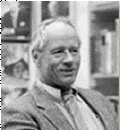Corn
It’s our most important, profitable, and adaptable crop—the true American staple. But where did it come from?
In 1748 an inquisitive Swede named Peter Kalm, a protégé of the great botanist Linnaeus, came to America to find plants that could be useful in his country. He went around asking questions of everybody about everything.





